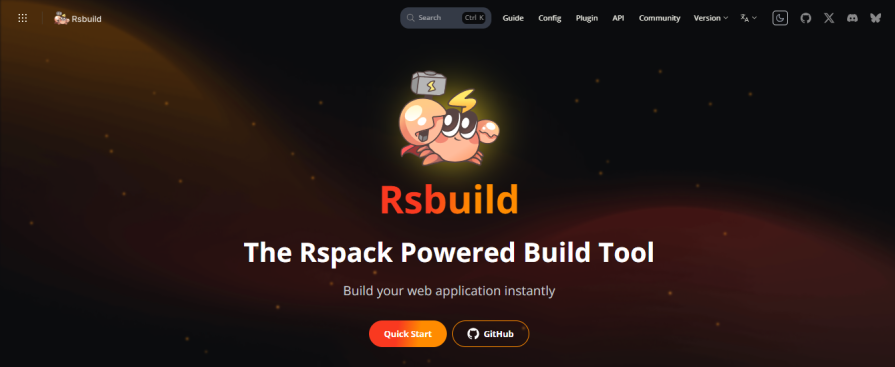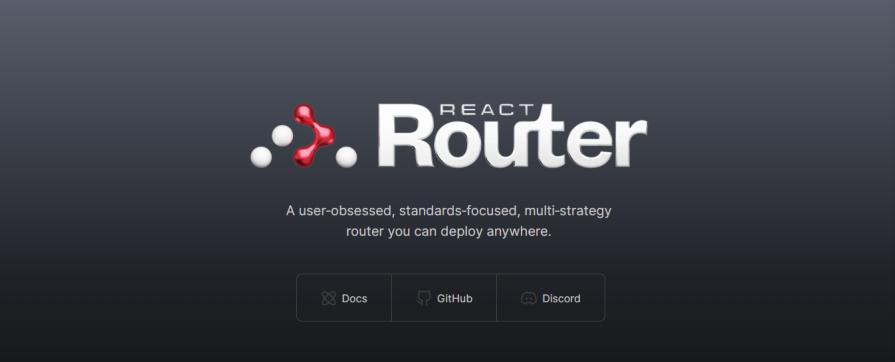In this post, we’ll discuss nine alternatives to Create React App, which was deprecated in February 2025:

Since its release in 2016, Create React App (CRA) has been one of the go-to tools for spinning up new React applications. However, in recent years, the React team has been encouraging developers to move away from CRA to other tools in the React ecosystem.
As of February 14, 2025, CRA has been officially deprecated. While it’s still technically usable, it is no longer being maintained, meaning it won’t receive updates, security patches, or improvements. For long-term projects, continuing to use CRA is not advisable.
So, what should React developers use instead? In this article, we’ll explore some of the best alternatives to CRA and how they can help you build modern React applications more efficiently.
Create React App offered an easy, low-configuration solution for setting up React projects. It combined tools like JSX, linting, and hot reloading into a single configuration, speeding up the process of bootstrapping React apps.
“Well then, why was it deprecated?” you ask. Here are some reasons:
The JavaScript ecosystem evolved over time, and CRA’s build system became outdated. Modern tools like Vite, Parcel, and Rsbuild have emerged, and they offer significantly faster builds and improved performance. CRA, which still relies on webpack, struggled to keep up with these advancements.
CRA’s slow build times and inefficient bundling made it difficult for developers to maintain a smooth workflow. Its hot module replacement (HMR) was also not as fast as other solutions, which made it slower by comparison. Similarly, its poor tree-shaking led to larger bundle sizes and slower load times.
Modern React apps need more than just a basic setup. Features like server-side rendering (SSR), static site generation (SSG), code-splitting, routing, and data fetching optimizations have become essential. CRA, being a client-side tool, did not support these features out of the box.
CRA had become difficult to maintain, and with no dedicated team actively working on updates, it became outdated.
Instead of relying on boilerplate tools like CRA, the React ecosystem has been moving toward opinionated frameworks that provide end-to-end solutions for building applications.
Having understood the React team’s motivation for deprecating CRA, let’s explore alternative solutions, starting with the build tools the team recommended.

Vite is a modern frontend build tool that provides an extremely fast development environment for React applications. Unlike CRA, which uses webpack, Vite uses esbuild and native ES modules, resulting in near-instant cold starts and fast HMR.
Vite is well-suited for small to large React projects that need fast builds. It’s a great tool to work with if you need a performant webpack alternative that requires minimal configuration. It’s also a good fit for apps that don’t need SSR or SSG.

Parcel is a zero-configuration build tool that aims to simplify the setup process for web applications. It automatically handles code splitting, hot module replacement, and asset bundling without the need for extensive configuration.
Parcel is a good fit for developers who prefer convention over configuration and want to get started quickly without manual setup.

Rsbuild is a modern build tool powered by Rspack, a high-performance JavaScript bundler written in Rust. It offers speed and efficiency and supports various frameworks, making it a solid choice for applications of all sizes.
Rsbuild is great for projects where build performance is critical.
That’s it for the build tools. Now, let’s explore the alternative frameworks and libraries that the React team recommended.
 Next.js, created by Vercel, allows developers to build server-rendered applications and static websites. It also addresses some challenges of client-side rendering, like poor SEO and slow initial load times.
Next.js, created by Vercel, allows developers to build server-rendered applications and static websites. It also addresses some challenges of client-side rendering, like poor SEO and slow initial load times.
Next.js has become widely used in the React ecosystem and is known as one of the most popular React frameworks.
Next.js is suitable for building server-rendered applications, static websites, and projects that require SEO optimization and fast page loads.

Remix is a full-stack React metaframework developed by the creators of React Router. Commonly known as Next.js’ competitor, Remix has cemented its place in the React ecosystem.
Remix is great for building dynamic, data-driven applications where performance is a focus.
 React Router is a popular, and dare I say go-to, routing library for React apps. It allows you to define how different parts of your application respond to navigational elements, ensuring that users can navigate through various components without a full page reload.
React Router is a popular, and dare I say go-to, routing library for React apps. It allows you to define how different parts of your application respond to navigational elements, ensuring that users can navigate through various components without a full page reload.
React Router is ideal for single-page applications that need dynamic routing and complex navigation structures.
 Expo is an open-source framework and a platform built around React Native. It allows you to create robust apps for iOS and Android using JavaScript and React.
Expo is an open-source framework and a platform built around React Native. It allows you to create robust apps for iOS and Android using JavaScript and React.
With Expo, you can write your application in a single codebase and deploy it across multiple platforms, eliminating the need to write separate code for iOS and Android.
Expo is suited for developers building cross-platform apps.
 TanStack Start, currently in beta, is a full-stack React framework built on top of TanStack Router, Nitro, and Vite. While it’s still a new framework, TanStack Start was recommended by the React team.
TanStack Start, currently in beta, is a full-stack React framework built on top of TanStack Router, Nitro, and Vite. While it’s still a new framework, TanStack Start was recommended by the React team.
Tanstack Start is ideal for data-intensive apps that need efficient data fetching and caching. It’s also a good fit for SEO-critical projects since it supports SSR.

RedwoodJS is an opinionated, full-stack web framework designed to help projects scale from side projects to startups. It combines tools like React, GraphQL, Prisma, TypeScript, Jest, and Storybook to provide an end-to-end development workflow.
Redwood is designed to support applications scaling from small projects to full-fledged startups. It is also ideal for building Jamstack apps without the complexity of setting up static site generators or a headless CMS.
Here are some tips and best practices to follow when migrating from Create React App:
Before migrating, assess your current project to understand its structure, dependencies, and custom configurations. Identify any CRA-specific features or ejected webpack configurations that may need to be replaced.
Different tools offer different benefits, so choose the best alternative based on your project’s needs. Note that the alternative you choose will affect the migration process because each tool has a different architecture, configuration style, and feature set.
For example, Vite relies on ES modules and requires moving index.html to the root directory while replacing react-scripts with vite commands.
If you choose Next.js, you will need to refactor your routing system — which will change your application’s and folder’s structure — since it uses file-based routing instead of React Router.
It’s always best to execute your migration in stages instead of all at once. The former reduces the chances of risks, downtime, and disruptions in case anything breaks during the process.
While the exact process may differ, the phased migration could look like this:
The journey doesn’t end with migrating all components and dependencies. You also need to perform post-migration tasks to ensure your application runs smoothly in production. These include activities like:
No man is an island. Luckily, and thankfully, you don’t need to figure out the migration process from scratch. The ecosystem is full of teams that have successfully migrated from one tool to another, and tutorials you can learn from:
Explore these resources to aid you as you migrate:
With all we’ve discussed in this article and the various resources highlighted, you’re set for a successful migration from Create React App.
Would you be interested in joining LogRocket's developer community?
Join LogRocket’s Content Advisory Board. You’ll help inform the type of content we create and get access to exclusive meetups, social accreditation, and swag.
Sign up now
Examine the difference between profit vs. cost center organizations, and the pros and cons these bring for the engineering team.

Explore how to pass functions and structured objects as parameters in TypeScript, including use cases, syntax, and practical scenarios.

Why API documentation matters, recent trends in the space, and how to build great docs from scratch using Docusaurus, step by step.

Get up to speed on Expo SDK 53, which brings with it a wealth of new and improved updates for the React Native ecosystem.